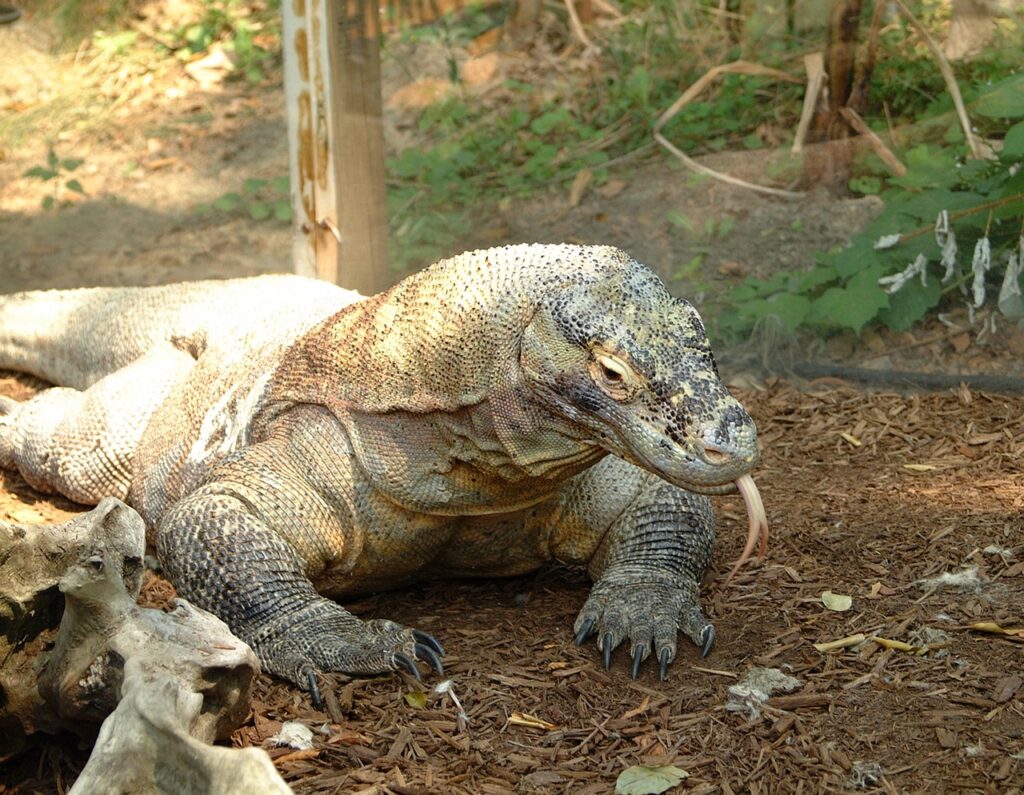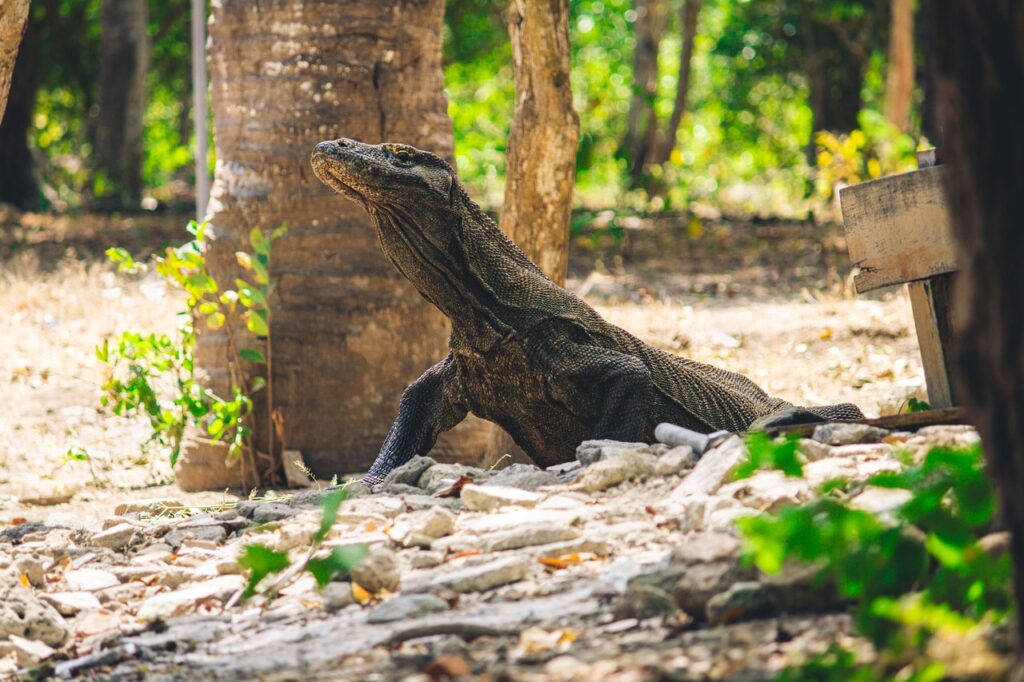Largest Lizard In the world

About the Komodo Dragon
These giant behemoths are known as the Komodo Dragons. Komodo Dragons are the largest lizards on earth. Full-grown Komodo Dragons can reach up to 10 feet and weigh over 300 pounds. Komodo dragons are native to the Indonesian islands of Komodo, Rina, Flores, and Gili Motang. On these islands, Komodo Dragons rule as the top apex predators. Typically, Komodo Dragons are solitary animals, but Komodo Dragons sometimes hunt in groups. During these hunts, Full-grown Komodo Dragons are able to hunt and consume full-grown goats, pigs, deers. However, smaller juvenile Komodo Dragons are often preyed upon by bigger Komodo Dragons as well as other predators such as wild boars and snakes.
Population Decline
In the past decades, the Komodo Dragon was classified as vulnerable back in 1996. However, the IUCN modified the status of Komodo Dragons to Endangered in 2021. This change in status is due to the Komodo Dragon’s steep decline in population from 1996 to 2021. To elaborate, there was an estimate of 5,000 to 8,000 Komodo Dragons in 1996, but a recent estimation in 2021 estimates only around 1,380 adults and 2,000 juveniles are left in the wild. These are shocking losses to the earth’s biodiversity. Similar to other endangered species, illegal hunting and establishment of human settlements are endangering the Komodo Change. Not only are Komodo Dragons suffering from illegal poaching, climate change is also causing habitat loss. These issues will not only affect species like the Komodo Dragon, they will also negatively affect humans. Rising temperatures from climate change will cause This steep decline of Komodo Dragons is part of the larger scale problem: the impending sixth mass extinction.
Conservation Efforts
There have been many conservation efforts established in order to help preserve the Komodo Dragon population. To protect the Komodo Dragons, the Indonesian government created the Komodo National Park to protect the Komodo Dragon and its ecosystems. The Komodo National Park has been a successful sanctuary for Komodo Dragons because it was able to safely guard the Komodo Dragon from outside threats. Additionally, the Komodo Dragon has been designated as an International Biosphere Reserve and a World Heritage Sight.
Mating Patterns/Reproduction
Oftentimes, male Komodo Dragons wrestle with each other to earn the attention of a female Komodo Dragon. Once a male and female Komodo Dragon mate, the female Komodo Dragon can lay up to 30 eggs. Fun fact about Komodo Dragons. Female Komodo Dragon can reproduce asexually without a male partner in a process called parthenogenesis. This is an evolutionary advantage to Komodo Dragons because it allows the continuation of the species without a male partner. However, this comes with the repercussion that the offspring will only be males.
How can we help?
It is important for us to protect this priceless treasure: the Komodo Dragon. Efforts to protect the Komodo Dragon, involve enacting laws and creating fundraisers. For example, The Smithsonian’s National Zoo and Conservation Biology Institute recommends ecotourism and volunteering with wildlife conservation foundations to help conserve Komodo Dragons. They also actively discourage people from buying items that are made from any sort of animal skins. This will benefit the Komodo Dragons because it raises awareness and increases funding for Komodo Dragons. To support Komodo Dragons, you can donate to the Komodo Survival Program at komododragon.org and donating or getting involved with the Whitley Fund for Nature, a fundraising and grant-giving nature conservation charity.
Sources
“Komodo Dragon, Facts and Photos.” Animals, National Geographic Society, https://www.nationalgeographic.com/animals/reptiles/facts/komodo-dragon.
“Komodo Dragon.” Animals, https://kids.nationalgeographic.com/animals/reptiles/facts/komodo-dragon.
Supriatna Professor of Conservation Biology, Jatna. “Why We Must Reassess the Komodo Dragon’s ‘Endangered’ Status.” The Conversation, 15 Mar. 2022, https://theconversation.com/why-we-must-reassess-the-komodo-dragons-endangered-status-168659.
Renault, Marion. “Komodo Dragons Are Now Endangered and ‘Moving toward Extinction’.” The New York Times, The New York Times, 8 Sept. 2021, https://www.nytimes.com/2021/09/08/science/komodo-dragons-endangered.html#:~:text=Their%20ranks%20have%20already%20experienced,juveniles%20left%20in%20the%20wild.
“Komodo Dragon Conservation.” Komodo Dragon Conservation | Taronga Conservation Society Australia, https://taronga.org.au/conservation-and-science/partnerships/komodo-survival-program#:~:text=Komodo%20National%20Park%20(KNP)%20was,World%20Heritage%20Site%20in%201991.
Goodkind, David. “Humanity Must Participate in Conservation Efforts to Save the Komodo Dragons.” Daily Titan, 14 Oct. 2021, https://dailytitan.com/opinion/humanity-must-participate-in-conservation-efforts-to-save-the-komodo-dragons/article_b0d3ec74-2c82-11ec-99f2-97b07351b087.html#:~:text=Other%20ways%20to%20help%20are,the%20gravity%20of%20global%20warming.
https://www.nationalgeographic.com/animals/reptiles/facts/komodo-dragon
